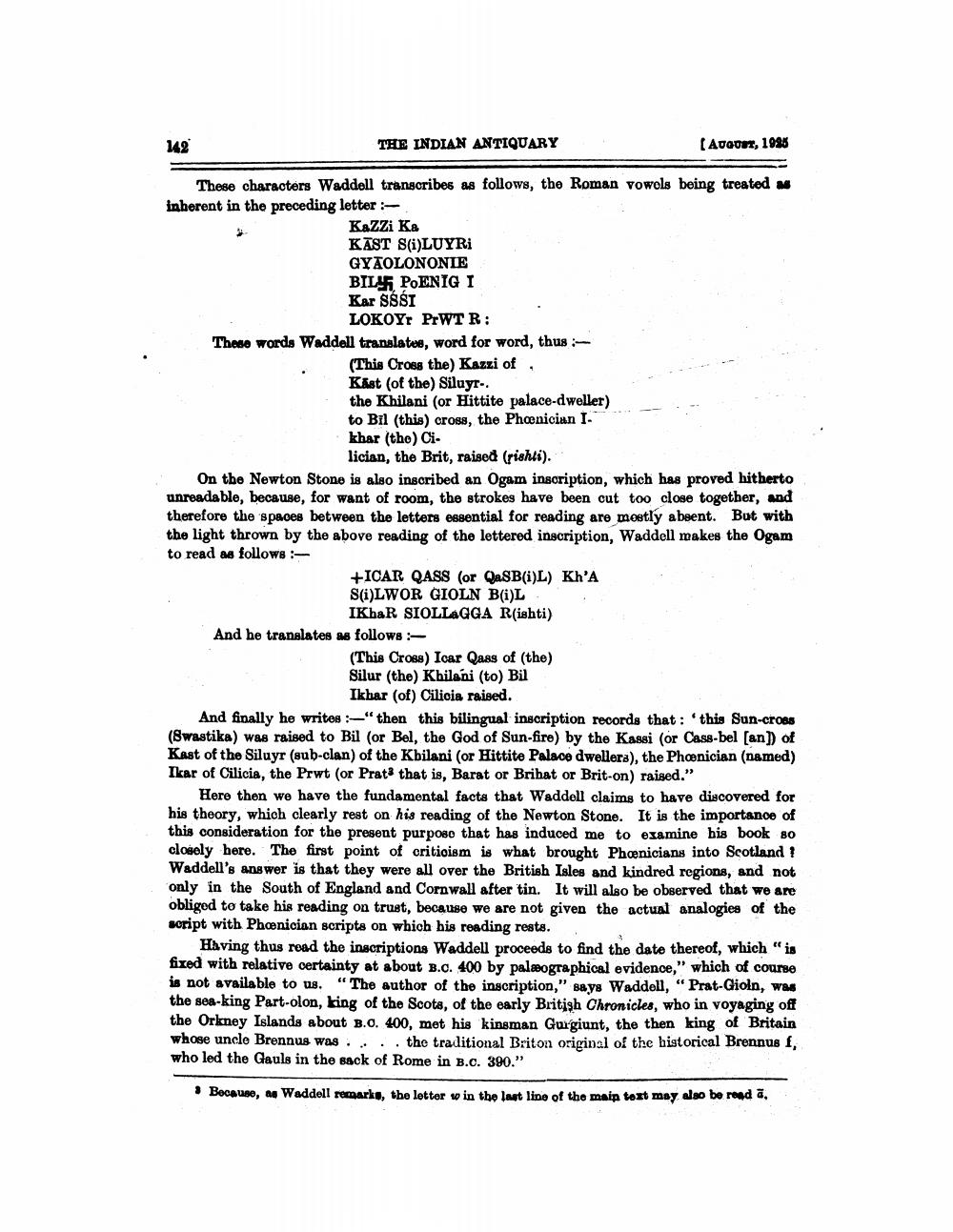________________
142
THE INDIAN ANTIQUARY
[AUGUST, 1925
These characters Waddell transcribes as follows, the Roman vowels being treated as inherent in the preceding letter:
KaZZi Ka KAST S(i)LUYRi GYAOLONONIE BIL POENIG I Kar SSSI
LOKOYr PrWTR:
These words Waddell translates, word for word, thus:
(This Cross the) Kazzi of Kast (of the) Siluyr-.
the Khilani (or Hittite palace-dweller)
"
to Bil (this) cross, the Phoenician Ikhar (the) Ci
lician, the Brit, raised (rishti).
On the Newton Stone is also inscribed an Ogam inscription, which has proved hitherto unreadable, because, for want of room, the strokes have been cut too close together, and therefore the spaces between the letters essential for reading are mostly absent. But with the light thrown by the above reading of the lettered inscription, Waddell makes the Ogam to read as follows:
+ICAR QASS (or QaSB(i)L) Kh'A S(i)LWOR GIOLN B(i)L IKhaR SIOLLAGGA R(ishti)
And he translates as follows:
(This Cross) Icar Qass of (the) Silur (the) Khilani (to) Bil Ikhar (of) Cilicia raised.
And finally he writes:-" then this bilingual inscription records that: this Sun-cross (Swastika) was raised to Bil (or Bel, the God of Sun-fire) by the Kassi (or Cass-bel [an]) of Kast of the Siluyr (sub-clan) of the Khilani (or Hittite Palace dwellers), the Phoenician (named) Ikar of Cilicia, the Prwt (or Prat3 that is, Barat or Brihat or Brit-on) raised."
Here then we have the fundamental facts that Waddell claims to have discovered for his theory, which clearly rest on his reading of the Newton Stone. It is the importance of this consideration for the present purpose that has induced me to examine his book so closely here. The first point of criticism is what brought Phoenicians into Scotland? Waddell's answer is that they were all over the British Isles and kindred regions, and not only in the South of England and Cornwall after tin. It will also be observed that we are obliged to take his reading on trust, because we are not given the actual analogies of the script with Phoenician scripts on which his reading rests.
Having thus read the inscriptions Waddell proceeds to find the date thereof, which "is fixed with relative certainty at about B.C. 400 by palæographical evidence," which of course is not available to us. "The author of the inscription," says Waddell, "Prat-Gioln, was the sea-king Part-olon, king of the Scots, of the early British Chronicles, who in voyaging off the Orkney Islands about B.C. 400, met his kinsman Gurgiunt, the then king of Britain whose uncle Brennus was. the traditional Briton original of the historical Brennus f, who led the Gauls in the sack of Rome in B.C. 390."
Because, as Waddell remarks, the letter w in the last line of the main text may also be read a.




